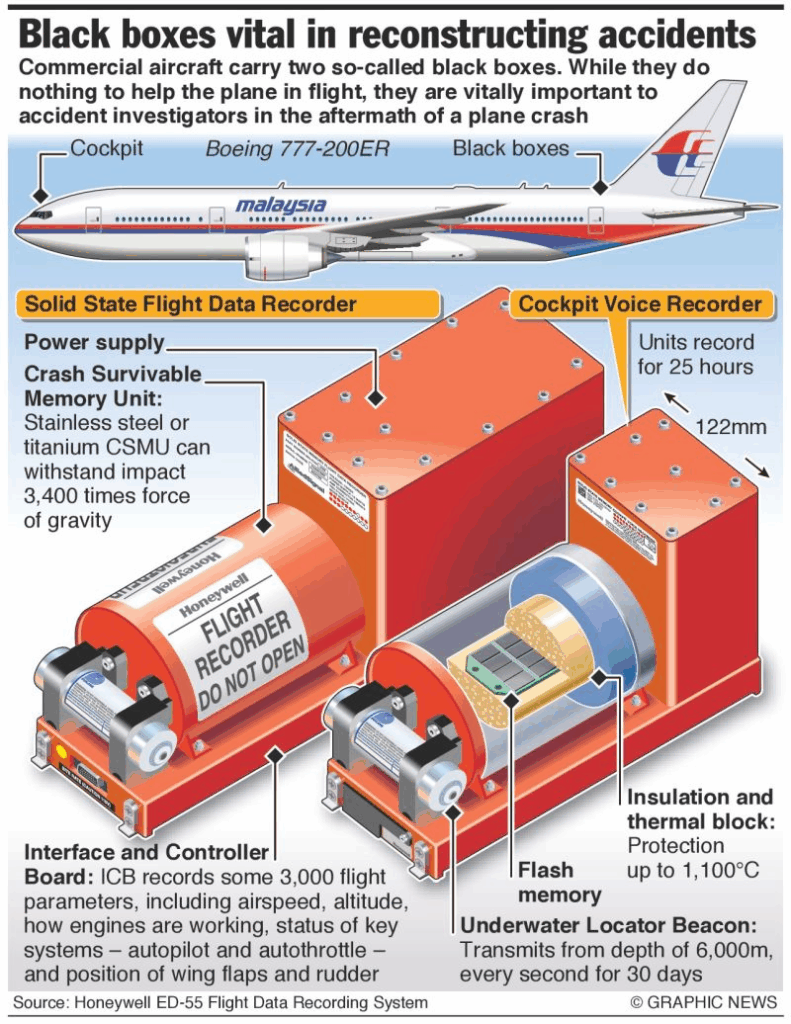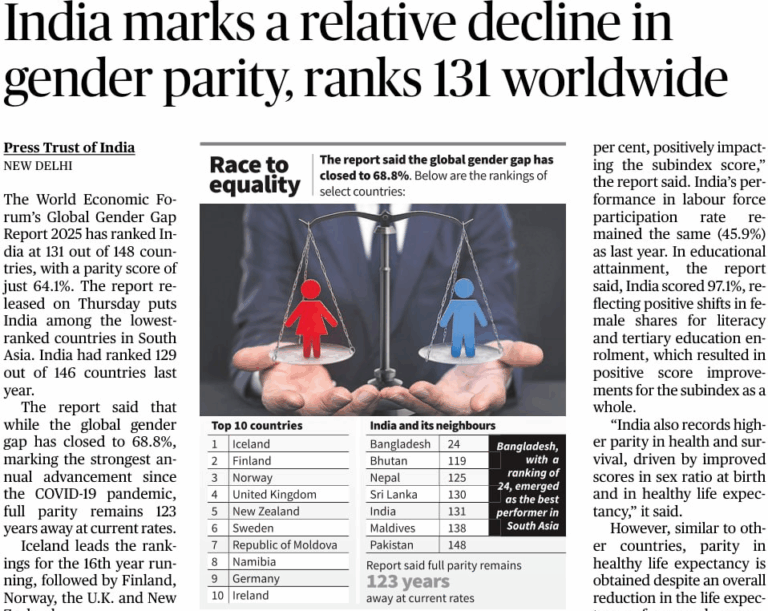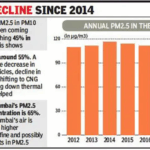Black Boxes in Aviation: Silent Witnesses to Air Crashes
Why in the News?
Authorities recently recovered the black box from the site of a tragic aircraft crash in Ahmedabad. The device is expected to play a crucial role in deciphering the causes behind the incident.
- This highlights the indispensable role of flight data recorders in aviation safety and investigation.

Background
- The concept of flight data recording emerged in response to increasing air travel incidents post-World War II.
- Dr. David Warren, an Australian scientist, developed the first practical Flight Data Recorder (FDR) in 1954 after investigating unexplained aircraft explosions.
- Although called “black boxes,” these devices are painted bright orange for easier identification in crash debris.
- Over time, international civil aviation authorities, including the ICAO (International Civil Aviation Organisation), have made black boxes mandatory on commercial flights.
Key Features of Black Boxes
Types of Black Boxes:
Cockpit Voice Recorder (CVR):
Records the last 2 hours of cockpit audio in a continuous loop.
Captures pilot conversations, radio calls, alarms, and ambient sounds.
Digital Flight Data Recorder (DFDR):
Records up to 25 hours of flight parameters like speed, altitude, engine performance, and control movements.
Technical Characteristics:
- Usually installed in the tail section of the aircraft, as it’s most likely to survive a crash.
- Built using solid-state memory chips enclosed in crash-resistant titanium or stainless-steel casings.
- Can withstand:
- Impact of up to 3,400 Gs (gravitational forces),
- Temperatures up to 1,100°C for one hour,
- Water pressure at 20,000 feet.
Locator Beacon:
- Each device includes an Underwater Locator Beacon (ULB) that emits acoustic pings for up to 30 days to assist in recovery from submerged sites.
Use in India:
- Managed by the Aircraft Accident Investigation Bureau (AAIB) under the Ministry of Civil Aviation.
- In April 2025, India launched its first indigenous Flight Recorders Laboratory in New Delhi, enabling quicker and localised data analysis.
Challenges
Data Recovery in Harsh Conditions:
- In cases of high-impact crashes or fires, memory modules may get damaged, complicating data extraction.
Limited Recording Duration:
- CVRs store only 2 hours of cockpit audio. In long-haul flights, crucial information from earlier segments may be lost.
Beacon Signal Limitation:
- ULBs emit signals only for 30 days. Deep-sea recovery operations can sometimes take longer.
Technological Gaps in India:
- Despite the new lab, India still relies on foreign expertise for complex decoding and analysis in certain scenarios.
Privacy and Legal Issues:
- Use of voice recordings from CVRs can raise ethical concerns regarding the privacy of pilots and crew, especially in court proceedings or public reports.
Way Forward
Enhancing Recording Capacity:
- ICAO and aviation manufacturers should move toward expanding CVR storage from 2 to 25 hours, as proposed.
Real-time Data Streaming:
- Adoption of cloud-based real-time flight data transmission for critical parameters to reduce reliance on physical recovery.
Beacon Upgrade:
- Development of beacons with extended battery life (up to 90 days) and GPS-enabled distress alerts.
Strengthening Indigenous Capabilities:
- Investment in R&D to make India self-sufficient in black box manufacturing, data decoding, and crash analytics.
International Collaboration:
- Partnerships with ICAO and global aviation safety bodies for technology transfer and knowledge sharing.
Wider Public Awareness:
- Educating the public on the purpose of black boxes can reduce speculation and misinformation following air crashes.
Conclusion
- Black boxes are a cornerstone of aviation safety, providing crucial insights that drive improvements in aircraft design, pilot training, and flight operations. As India modernises its aviation infrastructure, enhancing black box technology and crash investigation protocols is essential for ensuring safer skies.
FAQ (Frequently Asked Questions)
1. What is a black box in aviation?
A black box refers to two key devices: the Cockpit Voice Recorder (CVR) and the Digital Flight Data Recorder (DFDR), which record vital flight and cockpit data. Despite the term “black box”, these devices are painted bright orange to ensure visibility after an accident.
2. Why are black boxes important?
Black boxes are essential for investigating aircraft crashes. They help authorities understand pilot responses, detect technical failures, and enhance aviation safety standards.
3. Who analyses black box data in India?
In India, the Aircraft Accident Investigation Bureau (AAIB), functioning under the Ministry of Civil Aviation, is responsible for decoding and analysing black box data during aviation accident investigations.
MAINS PRACTICE QUESTION
Question: How do black boxes contribute to aviation safety, and what are the key challenges and developments in their use and analysis, particularly in the Indian context?
PRELIMS PRACTICE QUESTION
Q. Which of the following statements about aircraft black boxes is/are correct?
- 1. They are painted black to avoid reflection during retrieval.
- 2. They consist of a Cockpit Voice Recorder (CVR) and a Digital Flight Data Recorder (DFDR).
- 3. They are typically installed in the nose section of an aircraft.
Select the correct answer:







